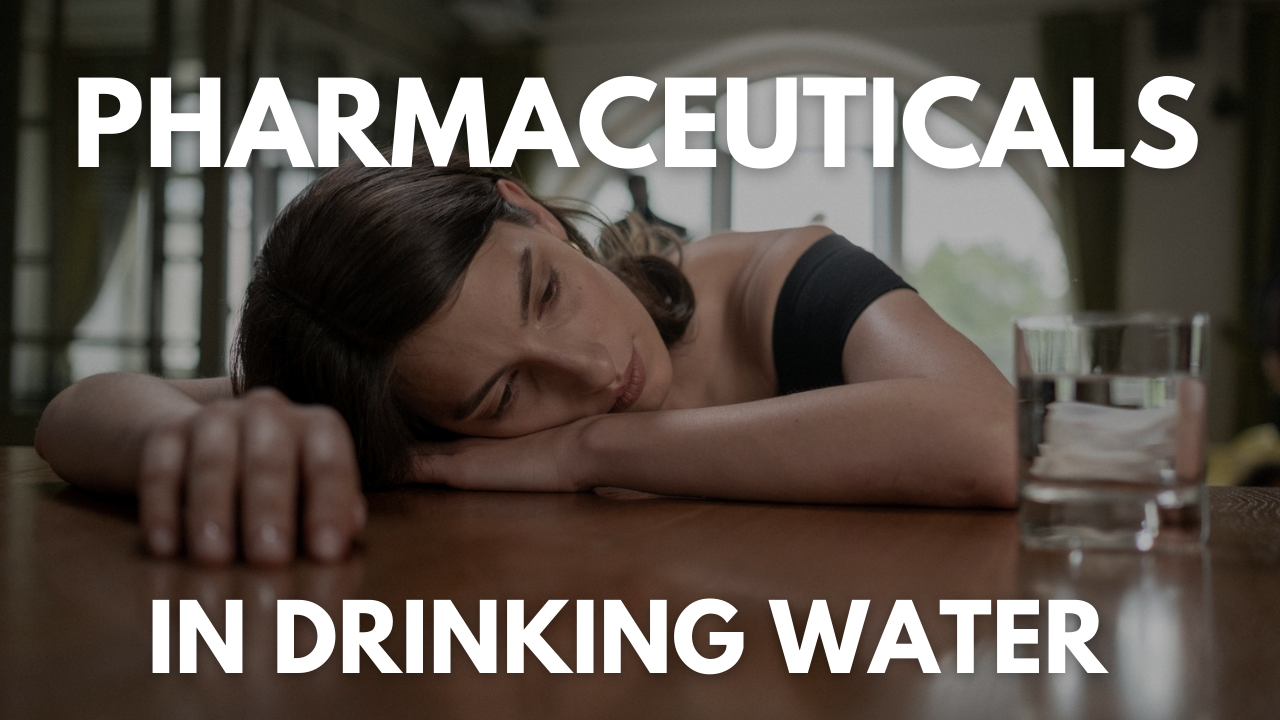Pharmaceutical drugs and medications are of growing concern for those who are conscious of the water they consume. Many are aware that an extensive range of pharmaceuticals is found in our water supplies - such as antibiotics, painkillers, hormones, antidepressants, and blood pressure drugs.
The big question is…
How Do Pharmaceuticals Get Into Drinking Water?
What do nursing homes do with leftover medication when a patient dies or is transferred to another facility?
While there are many cases of nursing facilities and some hospitals disposing of unused medications down the drain, the everyday consumer also plays a role.
The body only metabolises a fraction of the medications we swallow, while the rest is excreted in the urine or sweated out and washed down the drain in the shower. Therefore, our unmetabolised medications end up in wastewater and back into the water system.
Other sources of pharmaceuticals that many don't consider is veterinary use, pharmaceutical manufacture and waste water from hospitals.
Sometimes it’s nobody’s fault; it’s just how it is.

What Are The Risks Of Pharmaceuticals In Drinking Water?
While one might shrug it off and think that these minuscule amounts of pharmaceutical drugs don’t harm anyone, the opposite can be true.
Some people are allergic to certain drugs, and others have side effects, even at small doses. In addition, there are medications that a pregnant woman or child should never consume, and some drugs can be very harmful to the developing child.
Certain antibiotics carry the risk of allergic reactions, some of which can be severe, such as hives, swelling of the airways and anaphylaxis.

How To Remove Pharmaceutical Medication From Your Drinking Water
The best way to remove pharmaceutical drugs and medications from drinking water is by using a Reverse Osmosis Water Filter.
Most Reverse Osmosis Water Systems effectively remove 99% of pharmaceuticals from your water.
Our Buyers Guide To Reverse Osmosis covers everything you need to know about how Reverse Osmosis works and which water filter is best for your home.
A Popular Choice
The Aquasana OptimH2O Reverse Osmosis + Claryum® filter is an NSF certified Reverse Osmosis Water Filter which removes more than 95% of fluoride and mercury, 99% of lead, 97% of chlorine and arsenic, and 81 additional contaminants — including pharmaceuticals.
The OptimH20 adds healthy minerals such as magnesium, potassium and calcium back into the water before it flows into your glass.
Something worth a little look before you decide on something.
Please feel free to contact us with any questions; we’d be delighted to help.







